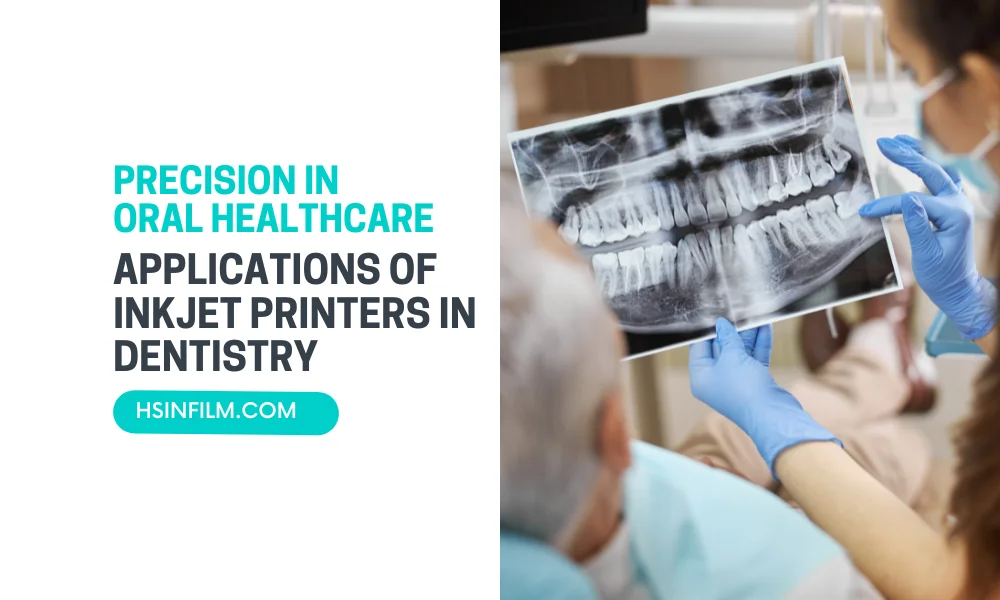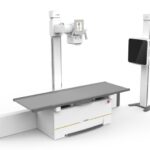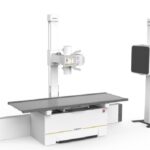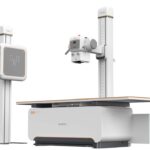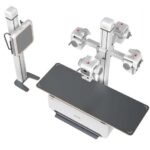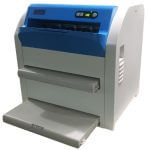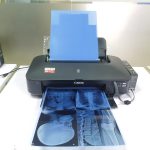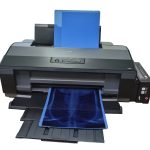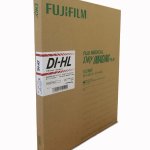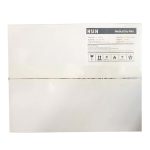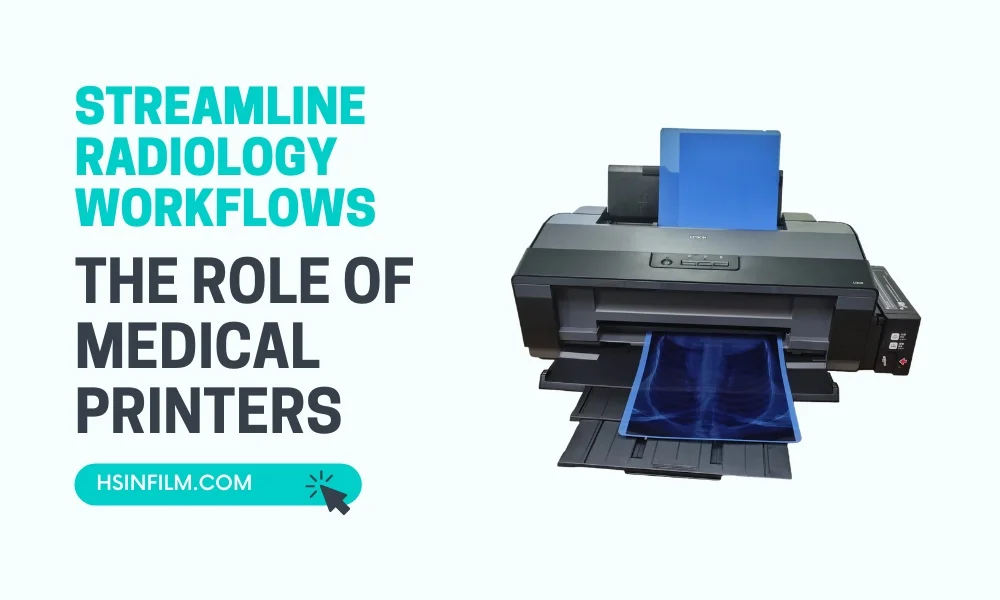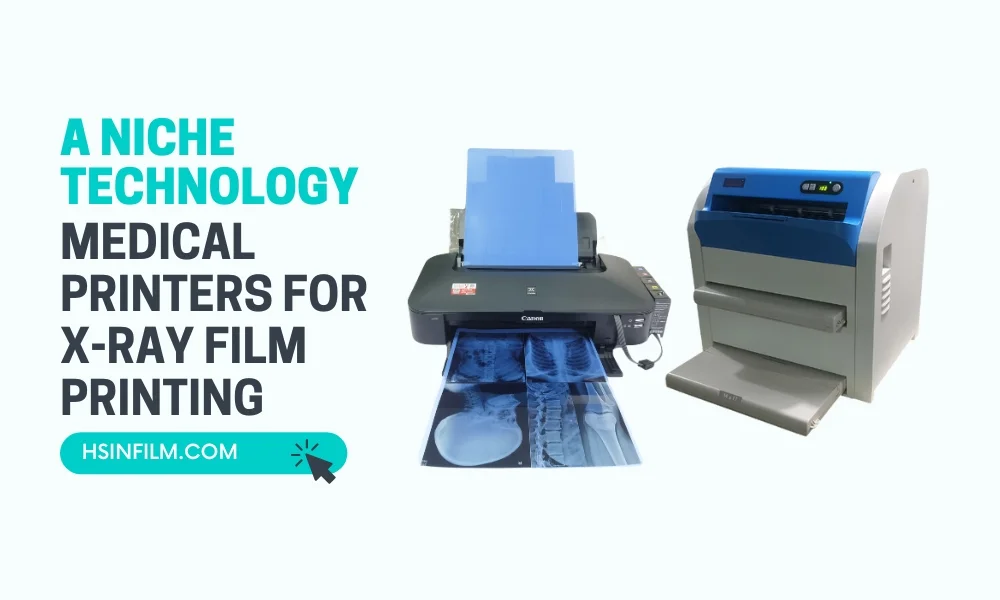How Do Inkjet Printers Transform Dental Imaging? In the dynamic landscape of modern dentistry, inkjet printers emerge as silent yet powerful allies, elevating the precision and efficacy of various applications. This comprehensive guide unravels the applications of inkjet printers in dentistry in dental imaging, delving into its role in dental X-rays and oral scans.
Table of Contents: Applications of Inkjet Printers in Dentistry
Introduction to Dental Imaging
Dental imaging is the backbone of diagnostics, enabling dentists to delve into the intricacies of oral health. In this digital age, technology has become synonymous with progress, and inkjet printers play a pivotal role in enhancing diagnostic capabilities.
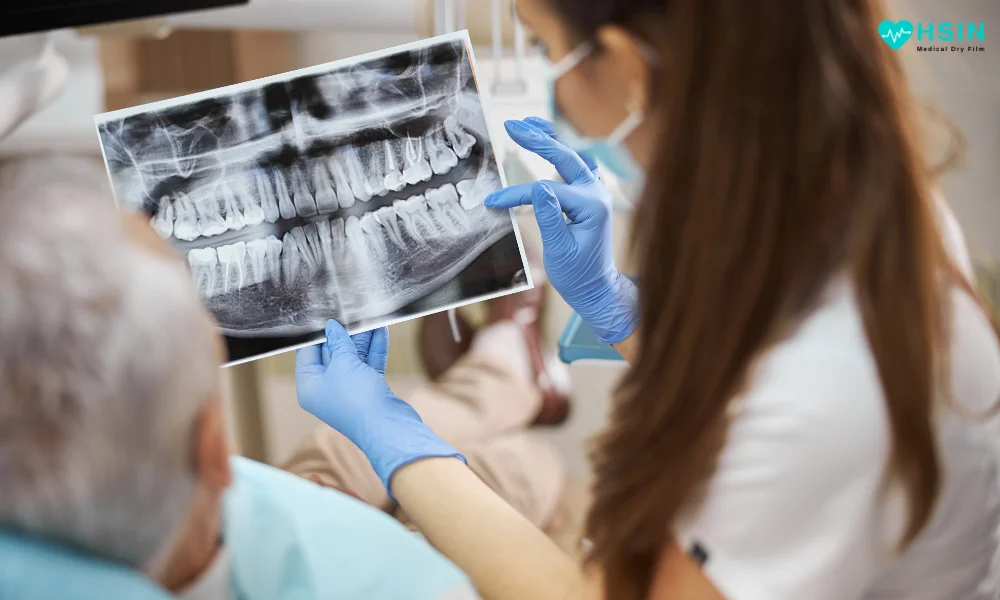
Significance of Imaging in Dentistry
Dental imaging is pivotal in diagnosing and treating various oral conditions, ranging from cavities to complex surgeries. The advent of inkjet technology has brought forth a new era of precision in reproducing these images.
Inkjet Printers in Dental X-rays
Dental X-rays are fundamental in diagnosing hidden oral issues, and medical inkjet printers enhance their utility by bringing precision and clarity to the forefront.
A. Benefits:
Precision in Detail:
Inkjet printers excel in reproducing detailed dental X-rays, ensuring that even the minutest issues are captured with utmost clarity.
Color Enhancement:
Vivid color representation enhances diagnostic capabilities, allowing dentists to identify subtle nuances in oral health conditions.
B. Applications:
Radiographic Images:
Understand the process of printing radiographic images using inkjet technology, ensuring precise reproduction.
Patient Education Material:
Explore how printed X-rays serve as valuable educational tools, aiding dentists in explaining conditions to patients effectively.
Also read: Inkjet Printers Maintenance Tips
Advancements in Inkjet Technology for Dentistry
As technology advances, inkjet technology tailored for dental applications continues to evolve. This section explores recent advancements and emerging trends.
A. Recent Technological Advancements
- High-Resolution Printing: Advanced inkjet technology delivers sharper and clearer images, crucial for detailed diagnostics.
- Enhanced Color Fidelity: Innovations ensure accurate and vivid color reproduction, aiding in precise diagnosis.
- 3D Imaging Capabilities: Inkjet printers now support the creation of intricate 3D oral scans, providing a comprehensive view for treatment planning.
- User-Friendly Interfaces: Modern inkjet printers are designed with intuitive interfaces, streamlining the workflow for dental professionals.
- Workflow Optimization: Innovations focus on improving efficiency, ensuring seamless integration into contemporary dental practices.
These advancements collectively elevate the capabilities of inkjet printers in dental imaging.
B. Emerging Trends
Trends shaping the future of inkjet applications in dentistry:
- Customization for Prosthodontics: Inkjet technology is evolving to create highly detailed and customizable dental prosthetics, offering tailored solutions for patients.
- Smart Integration with CAD/CAM Systems: Increasing integration with Computer-Aided Design/Computer-Aided Manufacturing systems, streamlining the production of dental restorations with precise inkjet printing.
- Portable Inkjet Solutions: Compact and portable inkjet devices are emerging, providing flexibility for chairside procedures and improving accessibility in dental offices.
- Biocompatible Materials Printing: Ongoing research focuses on developing inkjet-compatible biocompatible materials for dental applications, expanding the range of printable materials for various procedures.
- AI-Assisted Imaging: Incorporating artificial intelligence for image processing and diagnostics, enhancing the efficiency and accuracy of dental imaging through inkjet technology.
These trends signify a transformative phase, promising increased precision, efficiency, and customization in dental applications through inkjet printers.
Considerations for Choosing Inkjet Printers in Dentistry
Choosing the right inkjet printer is crucial for dental applications. This section guides readers on factors to consider and provides a comparative analysis of printer models suitable for dental imaging.
A. Key Considerations
Key considerations when selecting an inkjet printer for dental applications:
- Print Quality:
- Evaluate the printer’s DPI (dots per inch) to ensure high-resolution printing for intricate dental imaging.
- Check for technology advancements that contribute to finer details and clarity in prints.
- Color Accuracy:
- Assess the printer’s color management capabilities for accurate reproduction of dental structures.
- Look for printers with enhanced color fidelity to ensure diagnostic accuracy.
- Material Compatibility:
- Ensure the inkjet printer is compatible with a range of biocompatible materials suitable for dental applications.
- Verify that the printer supports materials commonly used in dental restorations and prosthetics.
- Ease of Calibration:
- Consider printers with easy calibration processes to maintain accuracy in color and detailing.
- Calibration features contribute to consistent and reliable printing results over time.
- Workflow Integration:
- Choose printers compatible with popular CAD/CAM systems, streamlining the workflow for dental professionals.
- Evaluate the ease of integration into existing dental imaging processes.
- Versatility in Printing:
- Opt for printers that offer versatility in handling various dental applications, from X-rays to 3D oral scans.
- Versatile printers adapt to the diverse needs of dental practices.
- User-Friendly Interface:
- Prioritize printers with user-friendly interfaces, facilitating seamless operation and reducing the learning curve for dental professionals.
- Intuitive interfaces enhance workflow efficiency.
- Durability and Maintenance:
- Consider the durability of the printer for long-term use in a dental setting.
- Assess maintenance requirements and choose printers with easy upkeep to minimize downtime.
- Regulatory Compliance:
- Ensure the printer complies with relevant dental and medical regulations, such as FDA approvals.
- Compliance ensures adherence to quality and safety standards.
- Cost of Ownership:
- Evaluate the total cost of ownership, considering initial costs, consumables, and maintenance expenses.
- Factor in long-term affordability for sustained use in a dental practice.
These considerations collectively contribute to selecting an inkjet printer that meets the specific requirements of dental applications, ensuring optimal performance and diagnostic precision.
Future Prospects and Challenges
This section envisions the future of inkjet technology in dentistry, discussing potential advancements and addressing challenges in its integration.
A. Future Technological Advancements
In recent years, inkjet technology has undergone significant advancements, and its trajectory in dental imaging holds promising possibilities. Emerging technologies and methodologies are shaping the future of inkjet applications in dentistry:
- 3D Printing Advancements:
- High-Resolution Dental Models: Inkjet printers are evolving to produce intricate 3D dental models with high resolution, enhancing the precision of dental restorations and prosthetics.
- Biofabrication for Dental Constructs:
- Biocompatible Inks: Ongoing research focuses on developing biocompatible inks suitable for printing dental constructs like scaffolds and tissues. This could revolutionize restorative and regenerative dentistry.
- Smart Materials Integration:
- Incorporation of Smart Materials: Inkjet printers may soon integrate smart materials, allowing for the creation of dental devices with responsive properties, such as stimuli-responsive drug delivery systems.
- Advanced Color Matching Techniques:
- Spectrophotometry and Color Matching: Future inkjet printers may incorporate advanced spectrophotometry techniques for precise color matching in dental restorations, ensuring a natural appearance.
- Point-of-Care Printing:
- Chairside Printing: The trajectory suggests the development of compact, chairside inkjet printers for on-the-spot production of dental appliances, reducing turnaround times and enhancing patient experience.
- Integration with Digital Workflows:
- Seamless Digital Workflows: Inkjet printers are likely to seamlessly integrate with digital imaging technologies, allowing for a streamlined workflow from digital impressions to final printed dental products.
- AI-Enhanced Printing:
- Artificial Intelligence Integration: Inkjet printers may leverage AI algorithms to optimize printing parameters, ensuring consistent quality and efficiency in dental imaging applications.
- Customization for Patient-Specific Treatments:
- Personalized Treatment Planning: Inkjet technology is expected to play a pivotal role in creating patient-specific dental solutions, tailoring treatments to individual needs and anatomical variations.
- Improved Materials Compatibility:
- Expanded Material Compatibility: Future inkjet printers may support a broader range of dental materials, including advanced ceramics and polymers, offering more choices for dental professionals.
- Remote Printing Capabilities:
- Tele-dentistry Support: Inkjet printers may feature remote printing capabilities, enabling collaboration between dental professionals and laboratories even in remote or underserved areas.
The trajectory of inkjet technology in dental imaging is moving towards a more interconnected, precise, and patient-centric approach. As these innovations unfold, the dental industry can anticipate a transformative impact on diagnostic capabilities, treatment options, and overall patient care.
B. Addressing Challenges
Challenges and Solutions in Integrating Inkjet Technology into Dental Practices:
Integrating inkjet technology into dental practices, while promising, comes with its set of challenges. Addressing these challenges is crucial to ensure a seamless and efficient adoption of inkjet printers in the dental field.
- Material Compatibility Challenges:
- Challenge: Limited availability of compatible materials for inkjet printing in dentistry.
- Solution: Collaborate with material suppliers and invest in research to expand the range of biocompatible and high-quality materials suitable for dental inkjet applications.
- Print Speed and Efficiency:
- Challenge: Inkjet printers may face limitations in speed and efficiency, impacting the workflow in busy dental practices.
- Solution: Invest in high-speed inkjet printers and optimize printing parameters to strike a balance between speed and print quality. Regular maintenance can also enhance efficiency.
- Cost Considerations:
- Challenge: Initial costs of acquiring inkjet printers and associated materials can be a barrier for smaller dental practices.
- Solution: Explore leasing options, government grants, or collaboration with dental associations for financial support. Highlight the long-term cost benefits and quality improvements inkjet technology offers.
- Training and Skill Development:
- Challenge: Dental professionals may lack expertise in operating and maintaining inkjet printers.
- Solution: Provide comprehensive training programs for dental staff, including hands-on experience with the printers. Collaborate with manufacturers for training support.
- Workflow Integration:
- Challenge: Ensuring seamless integration of inkjet printing into existing digital workflows.
- Solution: Invest in software solutions that facilitate integration with common dental practice management systems. Ensure compatibility with existing digital imaging technologies.
- Quality Assurance and Calibration:
- Challenge: Maintaining consistent print quality and accurate color reproduction over time.
- Solution: Implement regular calibration routines and quality control checks. Work closely with manufacturers to access updated software and firmware for improved performance.
- Patient Education:
- Challenge: Patients may not fully understand the benefits of inkjet technology in dental treatments.
- Solution: Develop educational materials and communication strategies to inform patients about the advantages, such as personalized treatments and enhanced diagnostic capabilities.
- Regulatory Compliance:
- Challenge: Adhering to regulatory standards, including those related to biocompatibility and patient data protection.
- Solution: Stay informed about evolving regulations, collaborate with regulatory experts, and choose inkjet systems that comply with industry standards and guidelines.
- Space Constraints:
- Challenge: Limited space in dental practices for accommodating additional equipment.
- Solution: Choose compact inkjet printers designed for dental offices. Optimize space utilization by integrating printers into existing workstations.
- Upgrading Technology:
- Challenge: Rapid advancements in inkjet technology may necessitate frequent upgrades.
- Solution: Establish a technology adoption plan and consider leasing options that include provisions for upgrading to newer models.
By addressing these challenges proactively, dental practices can successfully integrate inkjet technology, unlocking its potential to enhance diagnostic imaging, treatment precision, and overall patient care.
Conclusion: Paving the Way for Precision in Dental Care
This insightful exploration aims to demystify the synergy between inkjet printers and dental imaging, showcasing their applications and potential advancements in the realm of oral healthcare. As you embark on this journey, envision a future where precision and innovation converge, redefining the landscape of dental diagnostics. Explore more with HSIN Film’s cutting-edge Medical Inkjet Printers.
